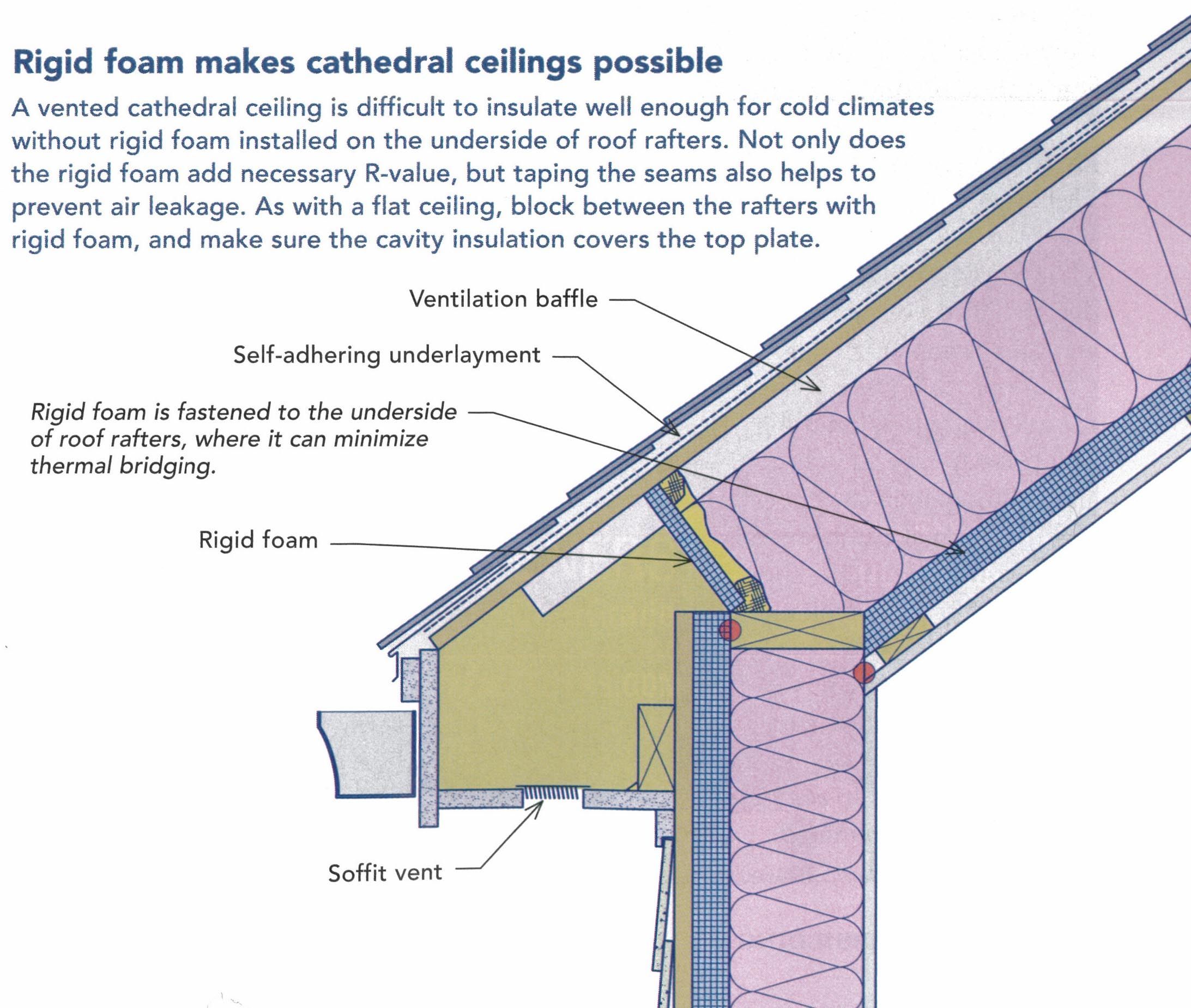Rigid Foam Roof Insulation Installation

Insulated roof assemblies can be vented or unvented.
Rigid foam roof insulation installation. In other words rigid foam can be applied on walls foundations and roofs and works great for both retrofits and new constructions. There are at least two good reasons why this approach makes more sense than installing the insulation under the roof sheathing. Install it anywhere from the roof to the foundation. Nailbase must be vented in high snow load areas.
R panel is manufactured with a closed cell polyisocyanurate foam core bonded to fiberglass reinforced facers and designed for use over metal nailable and non nailable roof decks with a variety of membrane systems. Install nailbase for cladding. They keep your home at a comfortable temperature without the need to crank your heat. Rigid insulation is one of the best tools to reduce your energy costs.
Use a straight edge knife or utility knife to cut the. To install measure the foam insulation panels to the roof s dimensions. Rigid foam offers tremendous boost to a home or office s r value. There are lots of different ways to insulate this type of roof but one of the best methods calls for the installation of rigid foam insulation above the roof sheathing.
You can even place it under the foundation slab. Johns manville r panel rigid roof insulation board offers r values of up to r 23 6 providing high thermal efficiency. Rigid insulation layers exterior to existing roof sheathing must provide sufficient thermal insulation r value to control condensation risk see climate specific guidance. The bottom layer of a single ply membrane roofing system is the roof deck or substrate.
First the foam will increase thermal performance by adding r value and minimizing thermal bridging. Install these panels over wall or ceiling cavities including those filled with existing fiberglass batts to boost the r value and improve home comfort and efficiency. The first step with roof installation is to prepare the roof deck by getting rid of all dirt dust and contaminants. One of the best benefits of rigid foam insulation is that it offers excellent thermal resistance at around double that of traditional insulation.
Install roofing underlayment flashing and cladding as per best practices. The benefits of adding a layer of rigid foam insulation to the exterior of walls and roofs are twofold. Start at the bottom of the roof and place the first piece of rigid foam insulation against the metal flashing starting at the center line. Second the foam will keep the sheathing warm so moisture passing through the wall or roof will find no cold surfaces for condensation to occur.
Rigid foam insulation installation prepare roof deck. The roof deck can be plywood metal concrete or wood planks. Nail it around the edges with roofing nails.














































